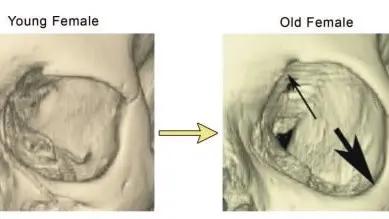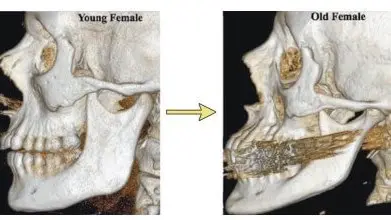February 14, 2022 | Facial Aging, Facial Implants
3 minute read
Much is known about the treatment of the soft tissue of the aging face. The mainstay of facial rejuvenation surgery has involved the lifting and redraping of tissue. More recently, we have come to appreciate that fat and collagen are lost over time, and volume restoration in fillers and fat transfer has grown in popularity.
However, do our facial skeleton undergo changes as we age as well? This is an important question because our skeletal structures provide foundational support for our soft tissue. Therefore, changes in the skeleton can significantly affect our appearance.
A study published in the journal Plastic and Reconstructive Surgery attempted to answer this very question [1]. They examined facial skeletal changes in male and female subjects as they aged by reviewing 3-D CT scans. The study showed that in both sexes, there was a significant decrease in bone volume throughout the faces of the subjects over time that resulted in larger eye sockets, a flatter cheek, and a smaller jaw.
These bony changes are important to consider because they contribute to the changes we see in the aging face. An increase in the size of the eye socket will result in the eyeball, and orbital fat sinking further back, which may worsen glabellar and crow’s feet wrinkles and cause the brow to sag. Flatter cheeks and smaller jaws result in less projection and support for the overlying tissue, leading to loss of jawline definition, jowl formation, and sagging neck skin.
How does this study change our approach to facial rejuvenation? While it is still important to treat soft tissue changes, considering and treating aging skeletal changes can further improve rejuvenation efforts. In addition to replacing soft-tissue volume loss, we can use fillers and fat to replicate the supportive function of the facial skeleton. We can also consider the placement of silicone implants to provide a large amount of permanent volume correction and better drape the overlying soft tissue.
In summary, the facial skeleton shrinks in volume over time, which results in decreased support and projection of the overlying soft tissue. Therefore, rejuvenation efforts may be further improved if we consider these bony changes and reproduce the supportive function of the facial skeleton through the use of fillers, fat transfer, or implants.
1. Shaw RB Jr, Katzel EB, Koltz PF, Yaremchuk MJ, Girotto JA, Kahn DM, Langstein HN. Aging of the facial skeleton: aesthetic implications and rejuvenation strategies. Plast Reconstr Surg. 2011 Jan;127(1):374-383. doi: 10.1097/PRS.0b013e3181f95b2d. PMID: 20871486.






